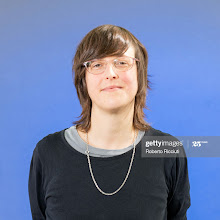What might it look like if we took the risk? What might we end up with if we followed the points in the ‘plan of action’ to the word? It is possible that rather than resulting in a radical new type of art practice, what would actually take place is a shift away from art and into the field of activism.
The Clandestine Insurgent Rebel Clown Army (CIRCA) was formed in 2003, to mark the official state visit of George W Bush to London at the onset of the Iraq war. It aimed to bring together “the ancient practice of clowning and the more recent practice of nonviolent direct action” (CIRCA 2003) – staging a series of strategic protests as part of an ongoing offensive against the evils of ‘war’ and ‘capitalism’. Before the protests at the G8 Summit at Gleneagles in 2005, the Rebel Clown Army embarked on a national recruitment tour of the United Kingdom. Anyone and everyone was invited to join, the only stipulation being that Basic Rebel Clown Training (BRCT) was first undertaken.
Much like the ‘plan of action’, the BRCT process focuses on the individual’s emancipation – on “transformation” and “personal liberation” from the dominant hegemony (CIRCA 2003). This internal reprogramming enables clownbatants, as they are known, to shut off their previous assumptions about hierarchical power structures and to step back and see the world with fresh eyes. From this new perspective the absurdity of a situation in which a line of protesters face-up against a line of police, becomes apparent. Beyond the signifiers of each others’ uniforms, Rancière’s notion of the omnipresence of equality becomes evident (Rancière 2007) and play and humour then perhaps do seem the natural human responses. Against the forward planning tactics of a traditional army (and indeed the career-minded artist) CIRCA’s emphasis is on spontaneity: “because the key to insurgency is brilliant improvisation, not perfect blueprints” (CIRCA 2003).
In a uniform which combines camo and greasepaint, clownbatants (as Point 5. suggests) ‘reject ego and embrace anonymity’ and so their inhibitions and embarrassment become irrelevant. So much more becomes possible without the worry of how they are perceived, of how others will judge them. Their individual subjectivities come together as a collective force of resistance. Their creativity exists in a space beyond the system of capital and they are utilising it to actively fight back.
The founders of the Rebel Clown Army were so aware of the importance of creativity in the process of resistance and of the potential for an evolution between art and activism, that they later set up the Laboratory of Insurrectionary Imagination (Lab of ii) as “a space to bring artists and activists together” (Harvie et al. 2005, p.249). The idea was to enable situations where they could work together and transfer skills – cultivating confidence in their “creative capacity as [a] fundamental tool for social change” (Lab of ii 2005). Functioning across the public realm, art world institutions and sites of traditional protest, the Lab of ii manages to successfully infiltrate and subvert different aspects of the hegemony. Most recently at Tate Modern in London, where under the banner of Disobedience Makes History – a two-day workshop on “art-activism” – they deliberately disobeyed the curator’s orders, encouraging participants to aim public attacks relating to the climate crises directly at the museum’s sponsors BP (Jordan 2010, p.35).
How to Reconcile the Careerist Mentality with Our Impending Doom
By Ellie Harrison
May 2010
Contents
- Preface
- Global Warming Projection
- Setting the Scene
- The Careerist Mentality
- Our Impending Doom
- A Rude Awakening
- Now or Never
- Atomised Art World
- Free Our Minds
- Outside the Bubble
- Plan of Action
- New Moral Code
- Clandestine Insurgence
- Alternative Knowledge
- Practical Solutions
- Multi-Pronged Approach
- A Reconciled Practice
- Our Fully Functional Role
- References
